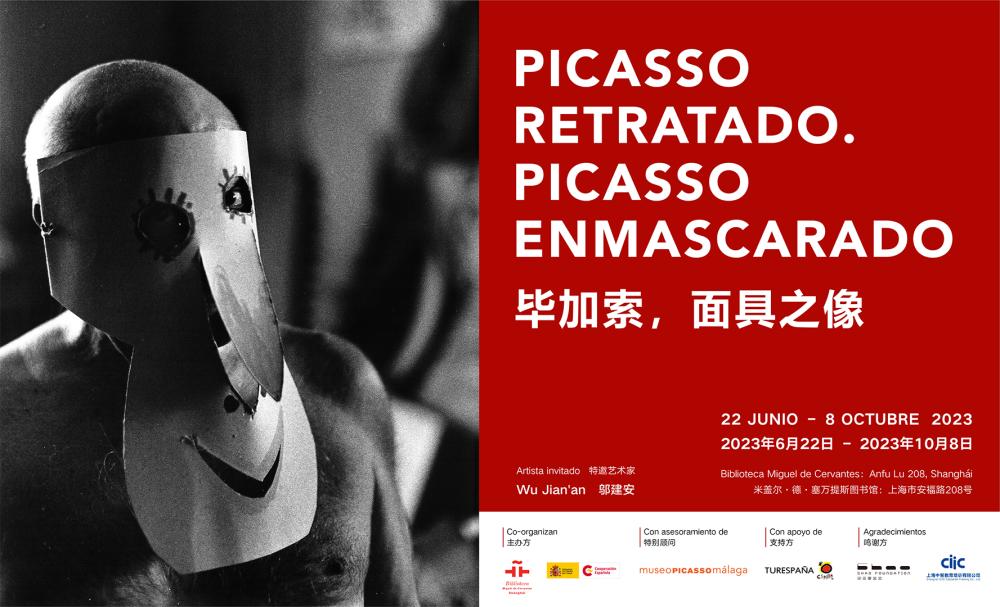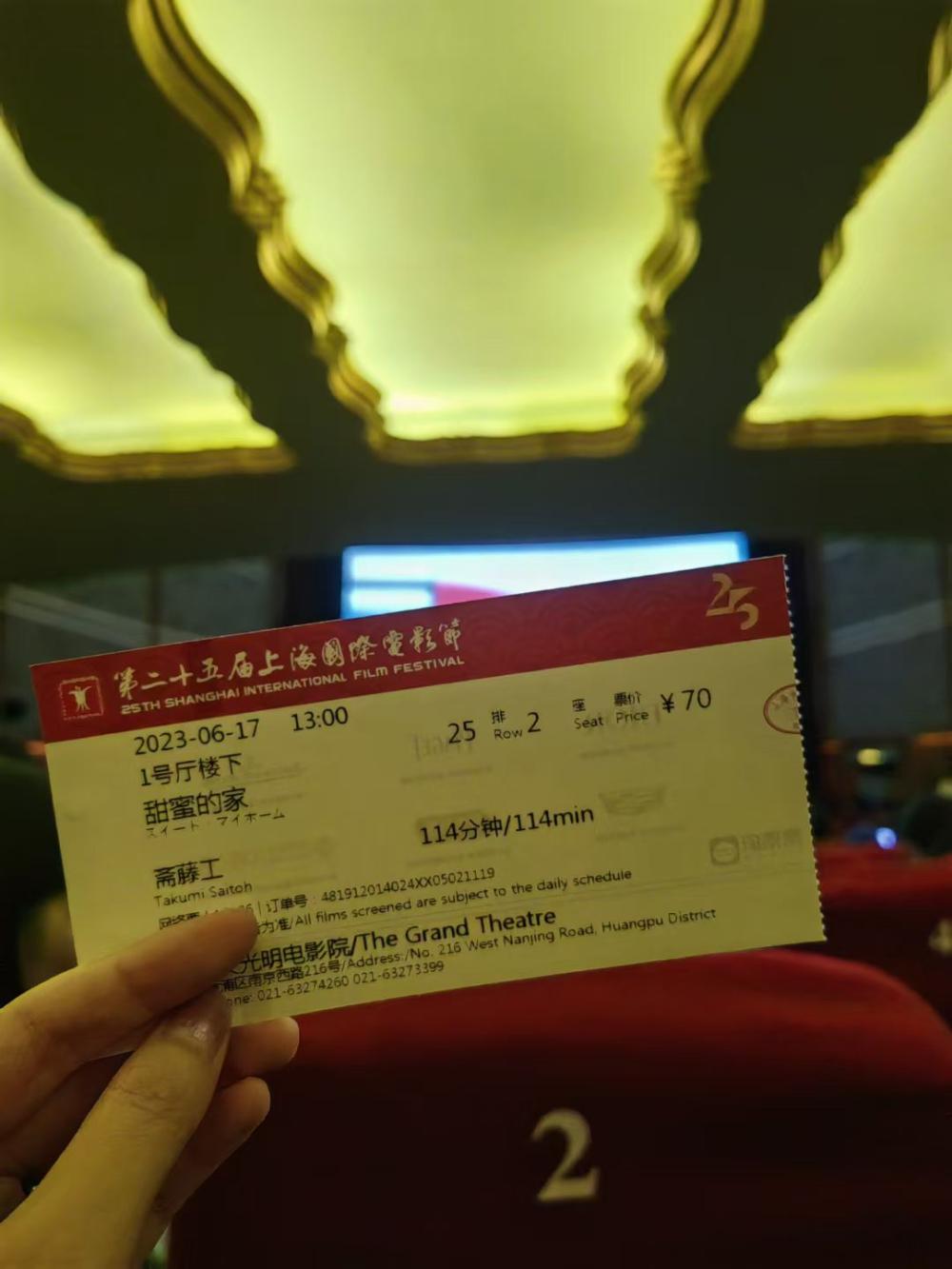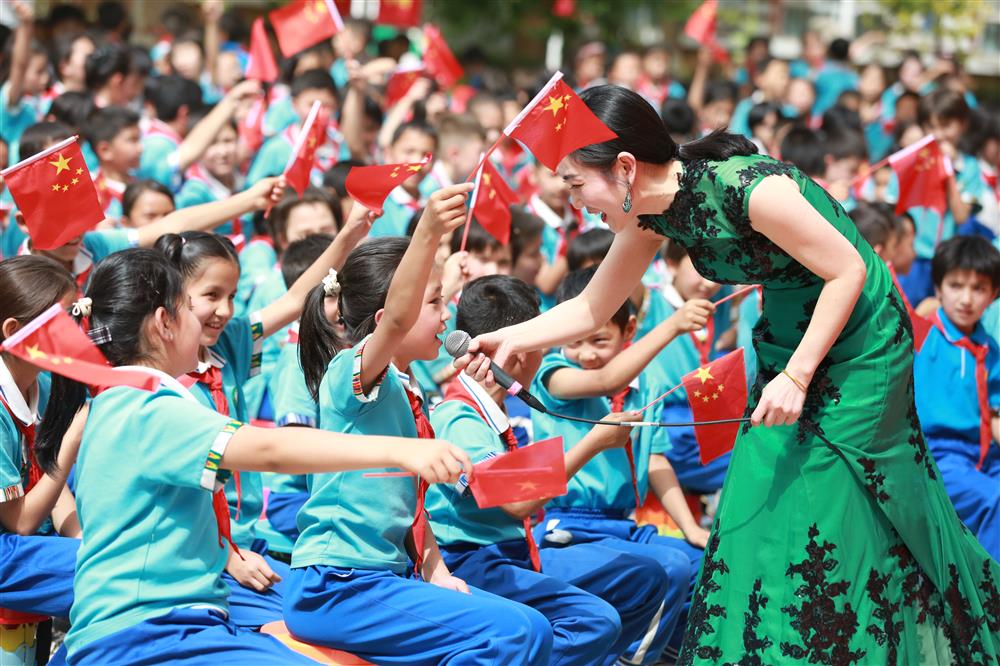It turns out that "Made in China" was already shining in the world at that time, and the brocade thousands of years ago still shines
Golden wine vessels with wings and wide mouths, brocade with symmetrical animal patterns that still shine after thousands of years, colorful glazed bricks that transform text into looping geometric patterns... This afternoon, the "Glory of Ancient Persia - Iranian Cultural Relics Exhibition" opened at the People's Square of the Shanghai Museum, bringing together more than 270 exquisite cultural relics from the National Museum of Iran, Gorgan Archaeological Museum, Rasht Museum, Persepolis Museum, Shanghai Museum, Xinjiang Uygur Autonomous Region Museum, and Bayinguoleng Mongolian Autonomous Prefecture Cultural Museum, including architecture, sculpture, coins, ceramics, glass, metal, calligraphy, painting, fabrics and other categories. The audience will find that many Iranian cultural relics still influence today's aesthetics, and there are many Chinese elements among them, witnessing the historical significance of the Silk Road to cultural exchanges and integration. Starting tomorrow, the exhibition will be open to the public free of charge and will be on display until October 7 this year.
Walking into the exhibition hall wrapped in the "Persian blue" color between dark blue and purple, your eyes are easily attracted by the shining gold. A golden wine vessel, the front of which is shaped like a lion, although the front legs are lying properly, the upper body is straight, the mouth is open and the tongue is sticking out. The most special thing is that a pair of wings grow from the back of the lion's front legs, protecting the huge cup that has evolved from the back. The cup body is decorated with parallel grooves, and there is a circle of lotus patterns on the top.
This winged lion gold laitong is 22.5 cm high, 21 cm wide, 13 cm in diameter, 19.5 cm in bottom diameter, and weighs 1,897 grams. It is currently in the collection of the National Museum of Iran. The word "laitong" is a transliteration of Greek, generally referring to a horn-shaped wine cup with a mouth at the bottom. It is believed that it may have originated from the earliest human habit of using animal horns to make cups for drinking. It has appeared since 2000 BC and gradually became popular in a wide area from the Aegean Sea to West Asia. Different materials and more sophisticated shapes have been developed. The scene of drinking with laitong often appears in murals.
A closer look at the artifact reveals that the lion's leg muscles are clearly defined, its expression is rich, and the mane covering its neck and chest is dense and complex, which is completely different from the equally delicate feathers on its wings. This laitong, which was created during the Achaemenid dynasty between 500 and 450 BC, depicts the muscles of the lion's forelimbs in a way that is unique to Achaemenid art, while the shell patterns on its wings can be traced back to the metal art of Lorestan. "From the Achaemenids to the Sassanids, a glorious era of Iranian art was built. During this period, Iranian cultural characteristics became increasingly clear, and the laitong wine vessels that originated in the Mediterranean region were combined with expressions of their own cultural characteristics." Wang Yue, a researcher at the Bronze Research Department of the Shanghai Museum, said that animal images are a very important element of Iranian culture, "The grassland culture's understanding, comprehension and empathy for animals are different from those of agricultural civilization."
Such unique animal images can be seen everywhere in this exhibition. A pottery of a humped bull, from the Iron Age around 1150-850 BC, shows the bull standing with its head held high, its mouth hidden between its horns, and rings on its ears; another animal bronze incense burner is in the shape of a cat with its tail cocked, from the Seljuk Dynasty in the 12th century AD. A closer look at the hollowed-out patterns on the body reveals a pattern of a beast chasing a rabbit, and there are also bird patterns on the neck.
The hollow pattern of the cat-shaped incense burner hides more animals
These unique and magnificent images still have a huge impact today. A high-relief bronze plaque with winged mythical beasts from the Iron Age between 850 BC and 550 BC features a pair of male human-faced sheep-bodied, winged figures, and below is a pair of female lion-headed, winged figures. Such images still frequently appear in many fantasy movies and cartoons today. A gold bracelet inlaid with agate from the Elamite period from about 585 BC to 539 BC has two ram heads at the end, and the bracelet is decorated with a beaded pattern made of gold beads welded together. This is a feature of the goldware on the Iranian plateau, and it also reflects the maturity and sophistication of the fine gold craftsmanship of the time, such as gold millet and inlay, and it still appears in a large number of jewelry designs today.
Geometric patterns are one of the most common elements in today's design. Mirror-image mythical beasts, paired sheep heads... Symmetrical patterns are a major feature of Iranian culture. The development of mathematics in ancient Persia made geometric patterns very common and unique at that time. A geometric Kufic inscription glazed tile from the Timurid dynasty in the 14th-15th century AD, which looks like a looping geometric pattern, is actually a sentence transformed into a pattern.
Walking in the exhibition hall, a huge installation of Iranian silver coins from 550 BC to 632 AD makes people stop. These coins are displayed by the Shanghai Museum from its own collection. The pattern on the front of the coin corresponds to the king of the time. Around BC, Chinese envoys who arrived at the ancient Iranian Parthian Dynasty, which was called Anxi in the Han Dynasty, found that the local coins were different from the Chinese square-holed round coins, so they recorded such images. The text echoes the real objects, proving that China and Iran had exchanges in the Han Dynasty. The interactive products of this exhibition are also inspired by this: the seals that have been popular in recent years have become steel stamps, leaving embossed patterns of coins on paper.
"Chinese elements" are very common in the exhibition. The blue-and-white porcelain disc with lotus, peony and flying phoenix patterns was found in a temple in Ardabil, northwest Iran. There are a large number of Chinese porcelains collected here, and many of them are engraved with honorifics in local characters on the back, witnessing the trade relationship between ancient China and Iran.
Several pieces of Tang Dynasty brocade unearthed from the Astana Tombs in Turpan, Xinjiang, are still shining after more than a thousand years. The animal images on the three pieces of brocade, such as the duck pattern, the bird pattern and the sheep pattern, all appear in pairs. "Organic cultural relics are difficult to preserve, but the specific climatic conditions in Turpan have preserved these cultural relics well." Wang Yue introduced that the pattern elements are typical Iranian styles of the Sassanid period. "From the Wei, Jin and Tang dynasties, the Silk Road was very lively. Iranian cultural elements appeared in Turpan and even Chang'an. There are even Iranian-style cultural relics in Japan's Shosoin, which were transmitted to Japan through China." According to reports, research shows that due to the huge commercial demand at the time, some Chinese people processed brocade according to the patterns required by the other party, and then took them back to sell as precious commodities. "The Silk Road is not only an exchange of goods, but also an exchange and dissemination of culture. This is of far-reaching significance to the exchange and development of human civilization."
Sayyed Ezatullah Zargami, Minister of Cultural Heritage, Tourism and Handicrafts of Iran, said in his speech that this exhibition is a selfless gift to promote unity and peace, telling the rich and colorful culture, art and civilization of Iran while also confirming the long history of exchanges between China and Iran. He believes that the exhibition can open a new chapter in cultural exchanges and dialogues between the two countries.
Jebral Nokand, director of the National Museum of Iran, said that the National Museum of Iran had participated in the "Blue and White Porcelain Exhibition of the Yuan Dynasty" held by the Shanghai Museum in 2012. The Iranian loaned cultural relics this time are larger in scale and richer in content. He hoped that this exhibition would provide the Chinese people who love culture with an opportunity to experience and appreciate the beauty of Iranian culture and civilization up close.
Chu Xiaobo, director of the Shanghai Museum, said that this exhibition also opened a new chapter for the Shanghai Museum's People's Square building to be positioned as the "World Civilization Museum". Starting with this exhibition, the Shanghai Museum will launch more theme exhibitions related to ancient civilizations in the future, making the Shanghai Museum a "display platform for the world's civilization garden".





